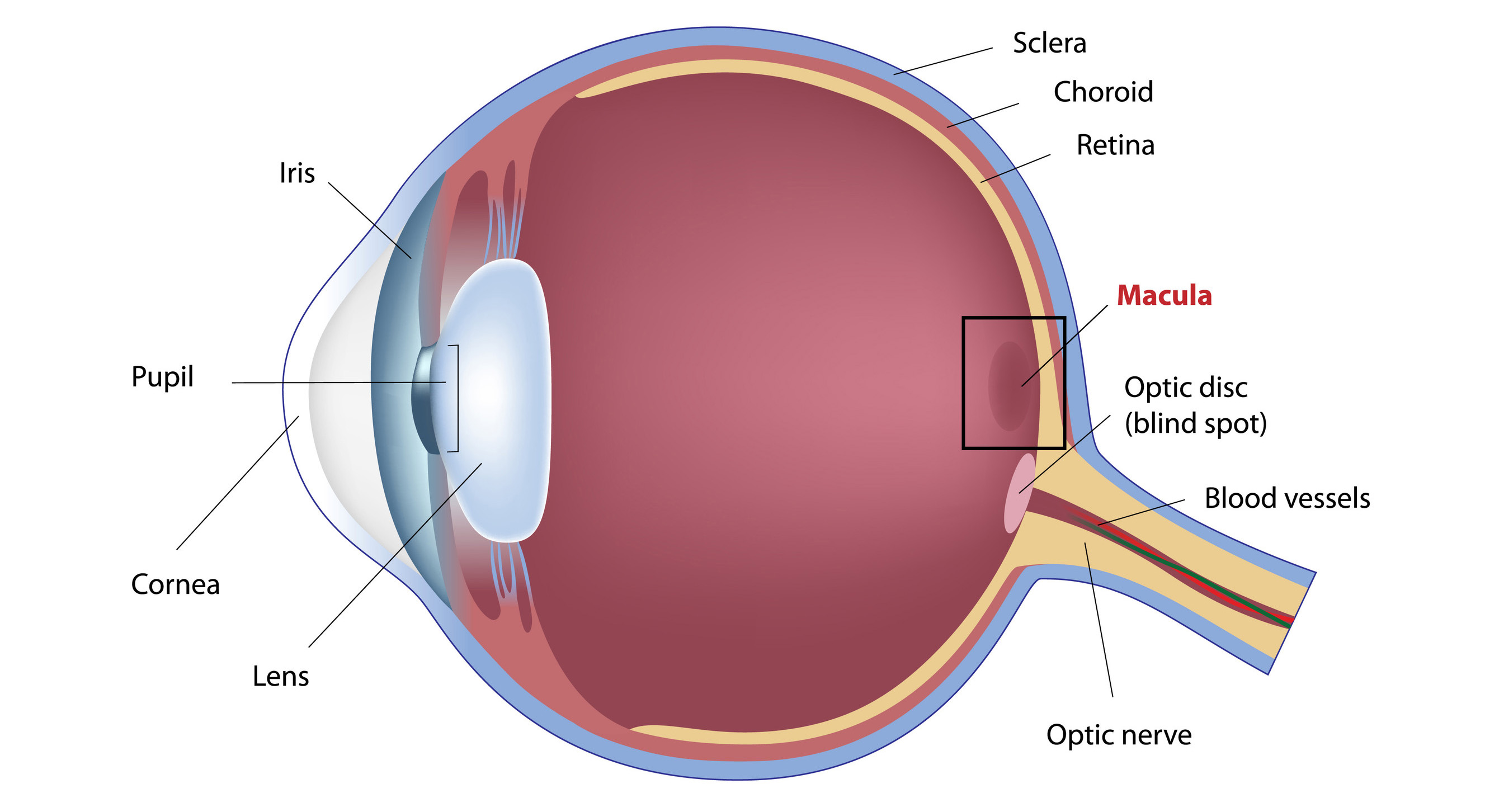What is the Macula?
The macula is the central area of the retina and is of particular interest to retina specialists.
Remember, that the retina is the light  sensitive tissue which lines the inside of the eye. The macula is the functional center of the retina. It gives us the ability to see “20/20” and provides the best color vision.
sensitive tissue which lines the inside of the eye. The macula is the functional center of the retina. It gives us the ability to see “20/20” and provides the best color vision.
The macula is small measuring about 5 mm in diameter.
Central Macula Called Fovea
In the very center of the macular region is the fovea.
The fovea is perhaps the most important part of the eye, at least in the human eye. Very often, vision is not lost until the fovea is affected by diseases such as diabetic retinopathy, the most common cause of blindness in young and middle-aged people, and age-related macular degeneration (AMD), the most common cause of blindness in the elderly.
Function of the Macula
The macula in the human eye is the place where light is focused by the structures in the front of the eye (cornea & lens). It takes the picture that is sent to the brain, where vision is completed. The macula provides us with the ability to read and see in great detail whereas the rest of the retina provides peripheral vision.
Of all the different parts of the eye, the macula is where the most important images are created before being sent along the optic nerve to the brain, where vision is completed. The structure of the macula needs to be undisturbed and relatively dry in order for the images to be clear and vision to be good. The high degree of sophisticated structure in the macula is one of the things that separate man from other beings on earth.
Common Macular Diseases
Diabetic retinopathy often affects the macula. Usually, it is in the form of fluid leakage, called diabetic macular edema. This is the most common cause of vision loss from diabetes, which is the leading cause of blindness in Americans between the ages of 20 and 74 years.
Vision loss in the elderly is usually either from cataracts, which are easily corrected with surgery, or age-related macular degeneration (AMD), which is more difficult to treat. The dry type of AMD has no treatment other than vitamin therapy, but the wet type can be treated with drug injections into the vitreous body, the structure that fills the center of the eye.
Other important diseases of the macula are macular holes and macular pucker, conditions that can be treated with surgery
J. Sebag, MD, FACS, FRCOphth, FARVO
Retina Specialist
Huntington Beach, CA 92647

